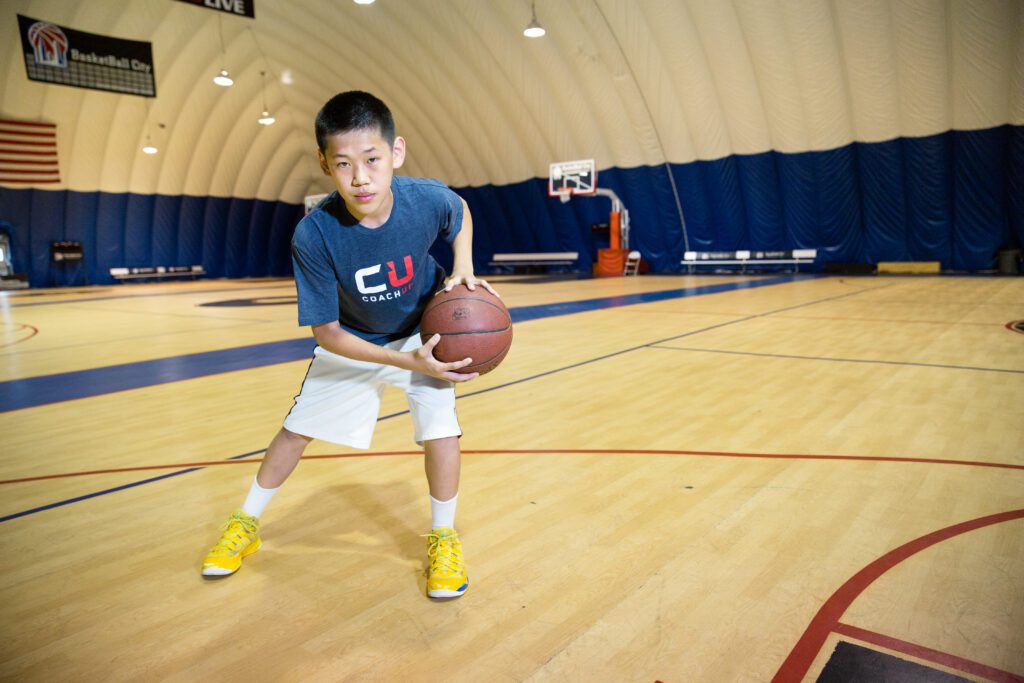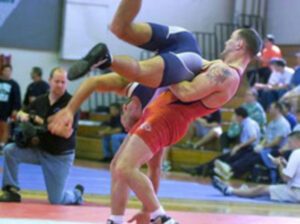Youth basketball coaches sometimes struggle with drawing up plays that young players can run effectively. They cannot be so complicated that the players won’t understand, but they should still be formulated to require skill and commitment. A good basketball play will get players open and lead to scoring opportunities—and greater overall success—which will keep young players interested in growing their game. While it can be challenging to engrain basketball intelligence into underdeveloped athletes, if a coach can commit their players to learning and improving upon fundamentals, they will eventually be able to handle more complexity in the game plan and plays.
Five fundamentals that all youth basketball players need to learn
Footwork
Athletes with good footwork will be able to score more easily. Proper footwork starts with the ready position. Offensive players should have their feet set and hands up, ready to receive a pass. Defensive players should be down low and also have their feet set with their hands up, ready to defend. Players should always stay on their toes, ready to move in any direction.
Screens
Screens are an essential part of most basketball plays. Coaches should aim to teach their players how to make a correct screen early in their development. A screen is meant to block the path of a defender, thus opening up another offensive player. Feet should be about shoulder-width apart or a little wider. The hands should be crossed in front for protection. When the screen is set, the player setting it can’t move or the referee will call a defensive foul. The screen setter’s body should be upright and square to the shooter.
Cutting
Players who can get open have a better chance of scoring. When offensive players get screens set for them, they should be running to the basket or the ball. A good tip for cutting is to keep the inside shoulder and hip between the defender and the basket or between the defender and the ball. The inside is the side that is closest to the basket or ball, depending on where the cut is going.
Timing
The timing of a basketball play can be difficult to master, especially for youth basketball players. The players all have jobs to do and must do them at the same time. Players should be aware of where the ball and their teammates are at all times and what their role is in the play. If everyone knows their job, the timing will get better with practice.
Passing
Youth basketball coaches often split their team in two and have their players partner up, with the intention of just passing the ball back and forth. Practicing chest and bounce passes repeatedly is a great way for players to learn the technique, but it negates the other most important aspect of passing: decision making. Setting up situational drills for players to pass the ball or show a fake on different commands will simulate in-game speed and the demand to make good decisions with the ball.
Putting a greater focus on these five fundamentals will lead to each of your athletes becoming more complete players, and, in turn, your team a more complete unit. With these keys to the game polished up, implementing more advanced basketball knowledge and plays will become possible.
Never overlook the value in taking care of the little things!

With our 100% money-back guarantee and vetted coaches, anyone can achieve their full athletic potential. CoachUp is the safest and easiest way to find a coach for personalized training. Find your perfect coach today and become the athlete you want to be!
How useful was this post?
Click on a star to rate it!
Average rating 5 / 5. Vote count: 1
No votes so far! Be the first to rate this post.



